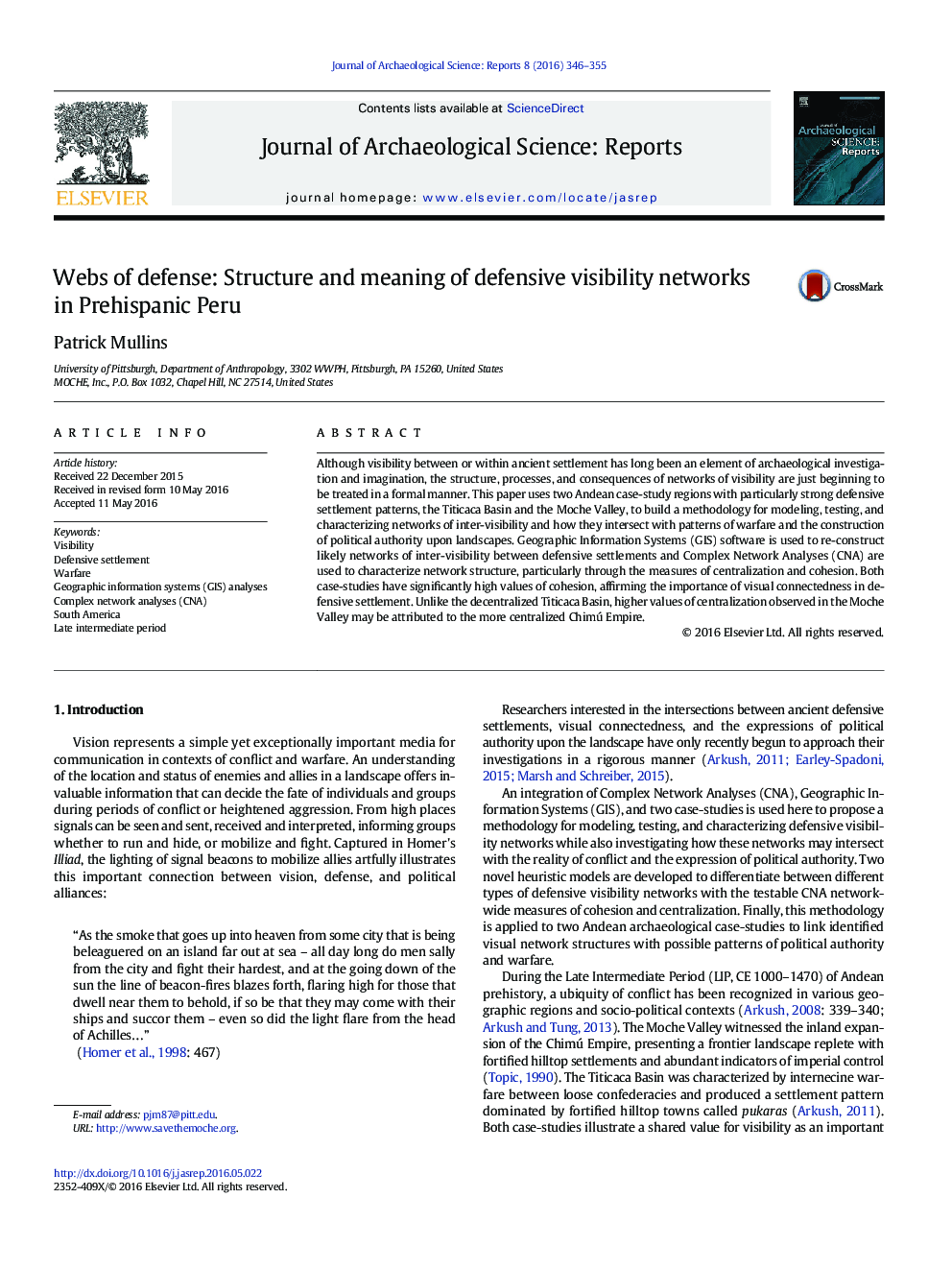| Article ID | Journal | Published Year | Pages | File Type |
|---|---|---|---|---|
| 7445568 | Journal of Archaeological Science: Reports | 2016 | 10 Pages |
Abstract
Although visibility between or within ancient settlement has long been an element of archaeological investigation and imagination, the structure, processes, and consequences of networks of visibility are just beginning to be treated in a formal manner. This paper uses two Andean case-study regions with particularly strong defensive settlement patterns, the Titicaca Basin and the Moche Valley, to build a methodology for modeling, testing, and characterizing networks of inter-visibility and how they intersect with patterns of warfare and the construction of political authority upon landscapes. Geographic Information Systems (GIS) software is used to re-construct likely networks of inter-visibility between defensive settlements and Complex Network Analyses (CNA) are used to characterize network structure, particularly through the measures of centralization and cohesion. Both case-studies have significantly high values of cohesion, affirming the importance of visual connectedness in defensive settlement. Unlike the decentralized Titicaca Basin, higher values of centralization observed in the Moche Valley may be attributed to the more centralized Chimú Empire.
Related Topics
Social Sciences and Humanities
Arts and Humanities
History
Authors
Patrick Mullins,
